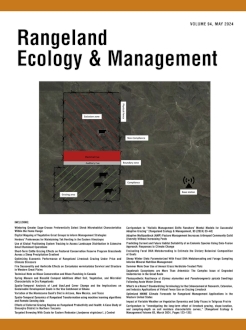Landscape distribution and grazing management of small ruminants are becoming more important issues as the sheep and goat industry continues to grow. The objective of this study was to evaluate spatial movement patterns of sheep and goats in Queensland, Australia using Global Positioning System (GPS) tracking to determine daily distance traveled, distance traveled from water, activity levels, and the influence of ambient temperature on these metrics. Optimized hotspot analysis was also performed to determine areas of increased small ruminant presence across the landscape. GPS positions were recorded at 10-min intervals over the course of several months. Sheep and goats traveled an average distance from water of 0.6–1.1 km, with a maximum of 2.4 km. Daily distance traveled of sheep and goats averaged 6–9 km·d–1, with a maximum of 11 km·d–1. Average daily activity ranged between 42% and 47%. The overall trend of the datum showed that increased temperature led to decreased daily distance traveled, distance traveled from water, and activity of sheep and goats. The hotspot analyses showed a higher concentration of sheep and goats near water sources. Understanding small ruminant distribution in extensive rangeland pastures helps producers implement management regimes to improve efficacy and sustainability of land use and production.
BioOne.org will be down briefly for maintenance on 12 February 2025 between 18:00-21:00 Pacific Time US. We apologize for any inconvenience.
How to translate text using browser tools
17 May 2024
Use of Global Positioning System Tracking to Assess Landscape Distribution in Extensive Small Ruminant Operations
Caroline Wade,
Mark Trotter,
Anita Chang,
Caitriana Steele,
Lara Prihodko,
Derek W. Bailey
ACCESS THE FULL ARTICLE

Rangeland Ecology and Management
Vol. 94 • No. 1
May 2024
Vol. 94 • No. 1
May 2024
animal behavior
extensive production systems
hotspot
precision livestock management
small ruminants
temperature




